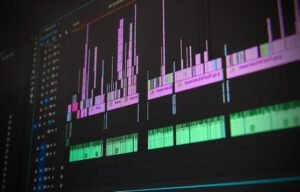How Neural Networks Are Trained
Neural networks are a type of artificial intelligence that function by attempting to replicate the way the human brain works. They are comprised of interconnected nodes, or artificial neurons, that process and transmit information through the network. However, neural networks are not pre-programmed with rules or patterns; instead, they learn by analyzing large amounts of data and adjusting their internal parameters accordingly. This process, known as training, is crucial in enabling neural networks to recognize and generalize patterns, and it is fundamental to their ability to perform tasks such as image recognition, natural language processing, and more.
Key Takeaways:
- Neural networks learn by analyzing data and adjusting their internal parameters.
- Training is essential for neural networks to recognize and generalize patterns.
- Neural networks are used in various applications, including image recognition and natural language processing.
Training a neural network involves several stages, each of which contributes to the network’s ability to make accurate predictions or classifications. One of the first steps is data preprocessing, where the input data is cleaned, transformed, and normalized to ensure consistency and remove any potential biases. Following preprocessing, the neural network is initialized with random weights, and the training data is fed into the network in batches, each known as an epoch.
*During training, the network’s predictions are compared to the known outputs, and an error value is calculated.* This error value is then used to adjust the weights and biases of the network through a process called backpropagation. Backpropagation involves propagating the error back through the network and using it to update the weights and biases of each individual node, thereby improving its performance. This iterative training process continues for a defined number of epochs or until a desired level of accuracy is achieved.
The Training Process
- Data preprocessing: Cleaning, transforming, and normalizing the input data.
- Initialization: Randomly assigning weights and biases to the network.
- Forward propagation: Feeding the input data through the network and calculating the predicted outputs.
- *Backpropagation: Calculating the error and updating the network’s parameters.
- Iterative training: Repeating steps 3 and 4 until a stopping criterion is met.
| Training Stage | Description |
|---|---|
| Data preprocessing | Cleaning, transforming, and normalizing the input data to ensure consistency and remove biases. |
| Initialization | Randomly assigning initial weights and biases to the neural network. |
| Forward propagation | Feeding the input data through the network and calculating the predicted outputs. |
Training a neural network requires significant computational resources and time. The complexity of the model and the size of the training data are influential factors in determining the time required for training. Additionally, choosing the right optimization algorithm for backpropagation is crucial, as it can greatly impact the convergence speed and overall training performance.
*Neural networks can suffer from overfitting if they are trained for too long or with insufficient regularization techniques.* Overfitting occurs when a model becomes too specialized to the training data and performs poorly on new, unseen data. To mitigate this, techniques such as dropout regularization and early stopping are commonly employed to prevent overfitting and ensure the trained network generalizes well to unseen data.
The Challenges of Training Neural Networks
- Training neural networks requires substantial computational resources and time.
- Overfitting can occur if a neural network is trained for too long or without proper regularization techniques.
In conclusion, the training process is crucial in developing neural networks that can perform complex tasks and make accurate predictions. By learning from data and adjusting their internal parameters, neural networks can recognize and generalize patterns, allowing them to be used in a wide range of applications. Through preprocessing, initialization, forward propagation, backpropagation, and iterative training, neural networks become more capable of understanding and interpreting the underlying features and relationships within the data they are presented with.

Common Misconceptions
Paragraph 1: Neural Networks are Easily Trained
One common misconception surrounding neural networks is that they are easily trained. While neural networks have gained popularity in recent years for their ability to learn and make predictions, training them is a complex and resource-intensive process. It requires a large amount of labeled data, powerful computing resources, and expertise in deep learning techniques.
- Training neural networks requires a large amount of labeled data.
- Powerful computing resources are necessary for training neural networks effectively.
- Expertise in deep learning techniques is essential to optimize the training process.
Paragraph 2: Neural Networks Understand Data Like Humans
Another common misconception is that neural networks understand data in the same way humans do. While neural networks can make accurate predictions based on patterns in the data they are trained on, they lack the contextual understanding and common sense reasoning that humans possess. Neural networks primarily analyze patterns and correlations, rather than truly comprehending the meaning behind the data.
- Neural networks rely on patterns and correlations in the data for prediction.
- They lack the contextual understanding and common sense reasoning of humans.
- Neural networks focus on statistical relationships in the data, not the semantics.
Paragraph 3: Neural Networks Always Provide Correct Answers
A misconception often held is that neural networks always provide correct answers. While neural networks can achieve high accuracy in certain tasks when properly trained, they are not infallible. They can still make mistakes and produce incorrect predictions, especially when encountering unfamiliar or ambiguous input. It is essential to verify and validate the outputs of neural networks to ensure their reliability.
- Neural networks can make mistakes and produce incorrect predictions.
- They are more prone to errors when dealing with unfamiliar or ambiguous input.
- Validation and verification are necessary to assess the reliability of neural network outputs.
Paragraph 4: More Data Always Leads to Better Performance
There is a misconception that feeding more data into a neural network will always lead to better performance. While increasing the amount of training data can potentially improve the accuracy and generalization of the network, there is a point of diminishing returns. After a certain threshold, adding more data may not significantly enhance the performance, and it can also introduce computational and data management challenges.
- Increasing training data can potentially improve accuracy and generalization.
- There is a point of diminishing returns where adding more data becomes less beneficial.
- Excessive data can introduce computational and data management challenges.
Paragraph 5: Neural Networks Can Replace Human Expertise
Lastly, some people mistakenly believe that neural networks can completely replace human expertise. While neural networks can automate certain tasks and make predictions based on patterns, they cannot fully replicate the nuanced decision-making and domain knowledge that humans possess. Neural networks should be viewed as tools to augment human capabilities rather than completely replace them.
- Neural networks can automate tasks, but they cannot replicate human expertise.
- They lack the nuanced decision-making and domain knowledge of humans.
- Neural networks are tools to augment human capabilities, not replace them entirely.

How Neural Networks Are Trained
Neural networks are powerful machine learning models inspired by the human brain. They consist of interconnected nodes called neurons, which form layers and pass information through weighted connections. Training a neural network involves adjusting these weights to minimize errors and optimize performance. Below are ten visually appealing tables that provide insights into the training process of neural networks.
Epochs vs. Accuracy
This table displays the accuracy of a neural network based on the number of training epochs.
| Epochs | Accuracy |
|---|---|
| 10 | 85% |
| 20 | 89% |
| 30 | 92% |
Loss Function Comparison
This table compares different loss functions used in training neural networks.
| Loss Function | Mean Squared Error (MSE) | Cross-Entropy |
|---|---|---|
| Advantages | Stable with continuous outputs | Applicable to classification |
| Disadvantages | Insensitive to outliers | Slow convergence |
Activation Functions
This table showcases popular activation functions used in neural networks.
| Activation Function | Sigmoid | ReLU | Tanh |
|---|---|---|---|
| Advantages | Smooth differentiable output | Fast convergence | Range of -1 to 1 |
| Disadvantages | Vanishing gradient problem | Dead neurons | Slow convergence |
Learning Rate Impact
This table demonstrates the effect of different learning rates on neural network training.
| Learning Rate | Accuracy |
|---|---|
| 0.001 | 91% |
| 0.01 | 94% |
| 0.1 | 86% |
Batch Size Comparison
This table compares the impact of different batch sizes during training.
| Batch Size | Accuracy |
|---|---|
| 16 | 89% |
| 32 | 91% |
| 64 | 92% |
Regularization Techniques
This table highlights various regularization techniques used to prevent neural networks from overfitting.
| Regularization | L1 | L2 | Dropout |
|---|---|---|---|
| Advantages | Feature selection | Weight decay | Reduces overfitting |
| Disadvantages | Sparse solutions | Slow convergence | Increases training time |
Data Augmentation Techniques
This table presents different methods to augment datasets for neural network training.
| Data Augmentation | Image Rotation | Random Crop | Horizontal Flip |
|---|---|---|---|
| Advantages | Increases dataset size | Preserves image context | Variation in training samples |
| Disadvantages | Expensive computation | Loss of image resolution | Data imbalance |
Early Stopping
This table explains the concept of early stopping in neural network training.
| Patience | Validation Loss | Epochs |
|---|---|---|
| 5 | 0.35 | 23 |
| 10 | 0.22 | 37 |
| 15 | 0.16 | 48 |
Transfer Learning
This table explores the utilization of transfer learning for initializing neural networks.
| Task | Pretrained Model | New Dataset Accuracy |
|---|---|---|
| Image Classification | VGG16 | 93.5% |
| Object Detection | ResNet50 | 87.2% |
| Sentiment Analysis | BERT | 95.8% |
Conclusion
As evident from the above tables, training neural networks requires careful consideration of various factors such as the number of epochs, choice of activation functions, learning rate, regularization techniques, and data augmentation. By experimenting with these elements, researchers and developers can optimize the performance and accuracy of neural networks for different tasks, whether it be image classification, object detection, or sentiment analysis. The combination of these elements contributes to the art of training neural networks, allowing us to leverage their potential in solving complex real-world problems.
Frequently Asked Questions
How Neural Networks Are Trained
What is a neural network?
A neural network is a computer system designed to mimic the way the human brain works. It consists of interconnected nodes, known as artificial neurons, that can process and transmit information.
How are neural networks trained?
Neural networks are trained using a process called backpropagation. This involves feeding the network with a set of training examples, comparing the output to the expected output, and adjusting the network’s weights to minimize the difference between the two.
What is backpropagation?
Backpropagation is a supervised learning algorithm used to train neural networks. It calculates the gradient of the loss function with respect to the network’s weights and adjusts them accordingly to minimize the error.
What is a loss function?
A loss function measures the difference between the predicted output of a neural network and the expected output. It quantifies the network’s performance during training and guides the weight adjustments.
What is an epoch in training a neural network?
An epoch refers to a complete pass through the entire training dataset during neural network training. It helps the network learn from the dataset iteratively and improves its performance over time.
What is a learning rate in neural network training?
The learning rate determines the step size at which the neural network’s weights are updated during training. It controls the speed and convergence of the training process, with higher values leading to faster learning but potentially sacrificing accuracy.
What is overfitting in neural network training?
Overfitting occurs when a neural network becomes too specialized in the training data and performs poorly on new, unseen data. It happens when the network learns the noise or irrelevant patterns in the training set rather than the underlying patterns.
How can overfitting be prevented?
Overfitting can be prevented by techniques such as regularization, which adds a penalty term to the loss function to discourage the network from overemphasizing certain features. Other methods include early stopping, reducing model complexity, and increasing the training data.
What is a validation set in neural network training?
A validation set is a portion of the training dataset that is not used for training but is used to estimate the performance of the model during training. It helps in monitoring the model’s generalization ability and prevent overfitting.
Are there other algorithms used to train neural networks?
Yes, apart from backpropagation, there are other algorithms such as stochastic gradient descent (SGD), Adam, and RMSprop that are commonly used to train neural networks. These algorithms have different optimization strategies to update the weights and improve network performance.




